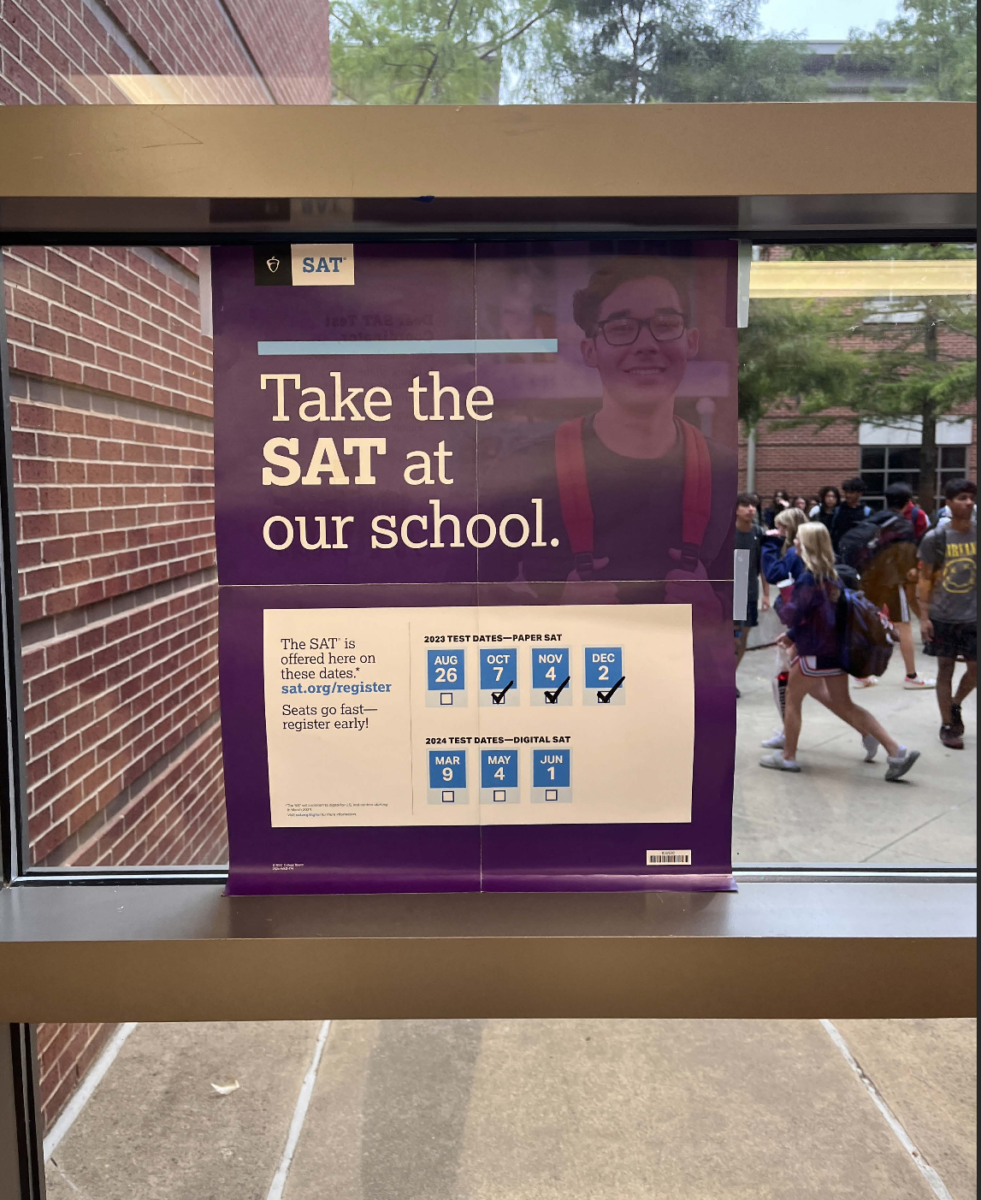FRISCO, TEXAS- The PSAT/NMSQT (Preliminary SAT/National Merit Scholarship Qualifying Test) is administered every school year during the fall semester on October 4th for sophomores and juniors. This also allows juniors the chance to qualify for a scholarship.
This year, the PSAT will be administered digitally for the first time, and many questions arise about the reason for the digitization of the format of the test. Here’s what the testing facilitator at CHS, Sarah Petelik, had to say about all of these questions.
“That decision came from Collegeboard- they are the ones who create the PSAT, SAT, and AP exams,” she said. “All of their exams are moving in that direction to be digital, and starting in January, the SAT and AP exams will become digital.”
Along with the decision by Collegeboard to digitize the PSAT, major changes will occur to the format of the PSAT test.
“The amount of time it will take will be a little over two hours, where it used to be over three,” she said. “A lot of… [the formatting] is in the types of accommodations available… students previously with a paper test can now use the computer with a read-aloud option.”
Another difference is the new types of questions College Board has pushed out.
“It’s called a multi-stage adaptive test.” She walked through how the system works.
“If you get a question wrong, it slightly lowers the rigor of the questions, and if you get a question right, it gets slightly harder.”
The reading section of the test has also seen some changes this year.
“The reading passages are shorter, instead of five to eight paragraphs with many questions afterward, now it’s just a few short passages tied to one question at the end.”
Petelik also mentioned College Board’s research on the effectiveness of multi-stage adaptive test questions.
“College Board did some research and saw a 20% increase in better results in the digital version.”
Some other notable features are the new tools that all students will have access to on the test.
“The test will also come with color contrast, an annotator, an answer eliminator, a Desmos graphing calculator, a timer, and different reference sheets, all of which are available for everyone which was something that wasn’t available before.”
Testing accommodations have also changed with the elimination of paper testing.
“I submit accommodations for these students [to Collegeboard]. [I]f there is a student with an accommodation for paper testing, we can submit it, and College Board has the final say.”
However, everything doesn’t always go smoothly.
“I had one student who applied for it but was denied, and now we have to try again.”
Luckily Petelik doesn’t stop until accommodations for students are met.
“Sometimes you have to answer more questions on the paperwork…[as] they might need more documentation, a letter from the doctor. [Collegeboard] are usually specific with what they need, that’s with any accommodations- not just paper testing.”
Coordination with the Special Education department also occurs.
“We also work with the Special Education teachers to figure out the needs of some students for testing.”
The digitization of the test also alleviates some pressure off the teachers and coordinators who are responsible for administering the tests.
“As a coordinator or teacher, it’s a lot easier to coordinate because it’s all on the computer.”
Classroom sizes will also change, as many students will no longer be assigned to test in the gyms as before.
“We can’t put a whole lot of kids in the gym, so instead everyone will be in a classroom of 20 or so [students].”
“We will be using classrooms so the whole school will be used, no more having a hundred kids in the gym, more teachers will be involved, testing classroom size will be smaller, more involvement in technology, and a technology help room for any tech needs.”
The new testing format calls for the school to administer the test on school Chromebooks.
In an email previously sent out to sophomores and juniors taking the test, students enrolled in the “1 For All” program would take the test on their Chromebooks. Students not in the program would need to get their hands on a school Chromebook on test day. Petelik clarified about the Chromebook situation.
“We have 300 testing computers on campus for students not in the “1 For All Program,” she says. “If a student has tech issues or needs a charger, we’re thinking about the issues that may come up, and we’re prepared for them.”
With the PSAT fast approaching, many students are preparing for the test. Good luck to all those taking the PSAT! Remember, don’t stress it!








